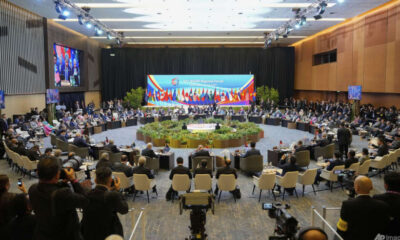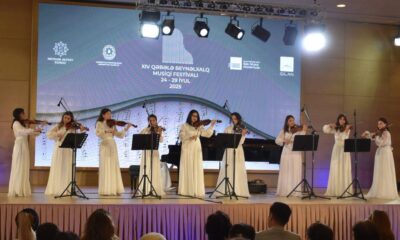Science
Examining Ancient Rome and China: Divergent Histories Unveiled

The recent speech titled “First notes on geo-philosophy,” delivered by Feng Youlan at the First World History Frontiers Forum in Beijing on September 12, 2025, has sparked a renewed interest in the historical trajectories of ancient Rome and China. Organized by the Chinese Academy of Social Sciences and published by the Appia Institute, Youlan’s address highlights the profound geographical and cultural differences that shaped these two ancient civilizations.
The ancient Roman state emerged around the Mediterranean, inheriting maritime skills from the Greeks and Phoenicians. These early cultures excelled in navigation, which became crucial as Rome sought to dominate the region. The Roman Empire’s naval and military strategies were characterized by a strong emphasis on cohesion and equality among its ranks. Rowers on Roman ships operated in unison, mirroring the structure of the Greek phalanx, where each soldier was integral to the overall success of the formation in both naval and terrestrial battles.
In contrast, the geographical context of ancient China was markedly different. Enclosed by steppes, deserts, and mountains, the Chinese landscape was initially dense jungle, requiring organized groups to manage its natural resources. This environment necessitated a hierarchical political structure, with a clear authority to coordinate long-term projects like river management and agricultural expansion. Unlike the unpredictable Mediterranean, where sudden changes could disrupt plans, the Chinese landscape allowed for more stable and predictable governance over extended periods.
The political systems in these two civilizations also reflected their respective environments. In Rome, leaders such as the consuls shared power, designed to mitigate errors in governance. This collaborative leadership model proved effective in various military campaigns, including the Greek League’s victory over Persia and Alexander of Macedon’s conquests. The Roman legion operated similarly to a private equity firm, where soldiers were rewarded based on their performance and rank, emphasizing individual merit within a collective structure.
Conversely, in China, the emperor held a semi-religious authority, embodying the hierarchical order essential for maintaining social peace. The governance model relied heavily on the ruler’s ability to distribute rewards and punishments, creating a dynamic where the leader’s success was paramount. This distinct social distance between the sovereign and the common soldier shaped a different approach to warfare, prioritizing loyalty over camaraderie among troops.
During the fourth and fifth centuries BCE, philosophical debates in China reflected these organizational differences. Mozi, one of the prominent philosophers of the time, engaged in discussions that questioned prevailing political ideas. His texts, particularly the chapters titled Fei (Against), challenged Confucian thought and advocated for a balanced inter-state authority to prevent aggressive expansion by powerful states. While he recognized the importance of efficient organization, he did not propose an army of equals akin to the Greek phalanx or Roman legion, which could have provided smaller states with a competitive edge.
The concept of heroism also diverged significantly between the two civilizations. In Roman culture, dying a hero’s death was celebrated, as epitomized in the Iliad, where characters like Achilles sought eternal fame through valorous acts. In contrast, Chinese philosophy emphasized the value of life preservation, with a focus on nurturing existence rather than seeking glory in battle.
Historically, while the Mediterranean was unified under Roman rule, this unity was short-lived. In contrast, the thematic concept of unification recurred throughout Chinese history, especially during the Sui and Tang Dynasties. These dynasties not only sought geographical but also historical continuity, presenting a linear narrative that glossed over past differences.
Both ancient Rome and China present fascinating yet contrasting narratives, shaped by their unique environments and cultural philosophies. The exploration of these divergent histories offers insights into the complexities of human civilization and how geographical contexts influence political structures, social organization, and collective identities. Understanding these historical paths is essential for addressing contemporary global challenges and fostering peaceful relations between nations.
In conclusion, as we reflect on the foundational aspects of these two great civilizations, it becomes evident that their legacies continue to inform our understanding of governance, society, and cultural identity. The examination of their histories serves not only as a reminder of the past but also as a guide for navigating the future.
-

 Lifestyle3 months ago
Lifestyle3 months agoHumanism Camp Engages 250 Youths in Summer Fest 2025
-

 Sports3 months ago
Sports3 months agoDe Minaur Triumphs at Washington Open After Thrilling Comeback
-

 Business4 months ago
Business4 months agoKenvue Dismisses CEO Thibaut Mongon as Strategic Review Advances
-

 Sports4 months ago
Sports4 months agoTupou and Daugunu Join First Nations Squad for Lions Clash
-

 Top Stories4 months ago
Top Stories4 months agoColombian Senator Miguel Uribe Shows Signs of Recovery After Attack
-

 World4 months ago
World4 months agoASEAN Gears Up for Historic Joint Meeting of Foreign and Economic Ministers
-

 Business4 months ago
Business4 months agoOil Prices Surge Following New EU Sanctions on Russia
-

 Health3 months ago
Health3 months agoNew Study Challenges Assumptions About Aging and Inflammation
-

 Entertainment3 months ago
Entertainment3 months agoDetaşe-Sabah Violin Ensemble Captivates at Gabala Music Festival
-

 Entertainment3 months ago
Entertainment3 months agoBaku Metro Extends Hours for Justin Timberlake Concert
-

 Business4 months ago
Business4 months agoU.S. House Approves Stablecoin Bill, Sends to Trump for Signature
-

 Top Stories4 months ago
Top Stories4 months agoRethinking Singapore’s F&B Regulations Amid Business Closures









